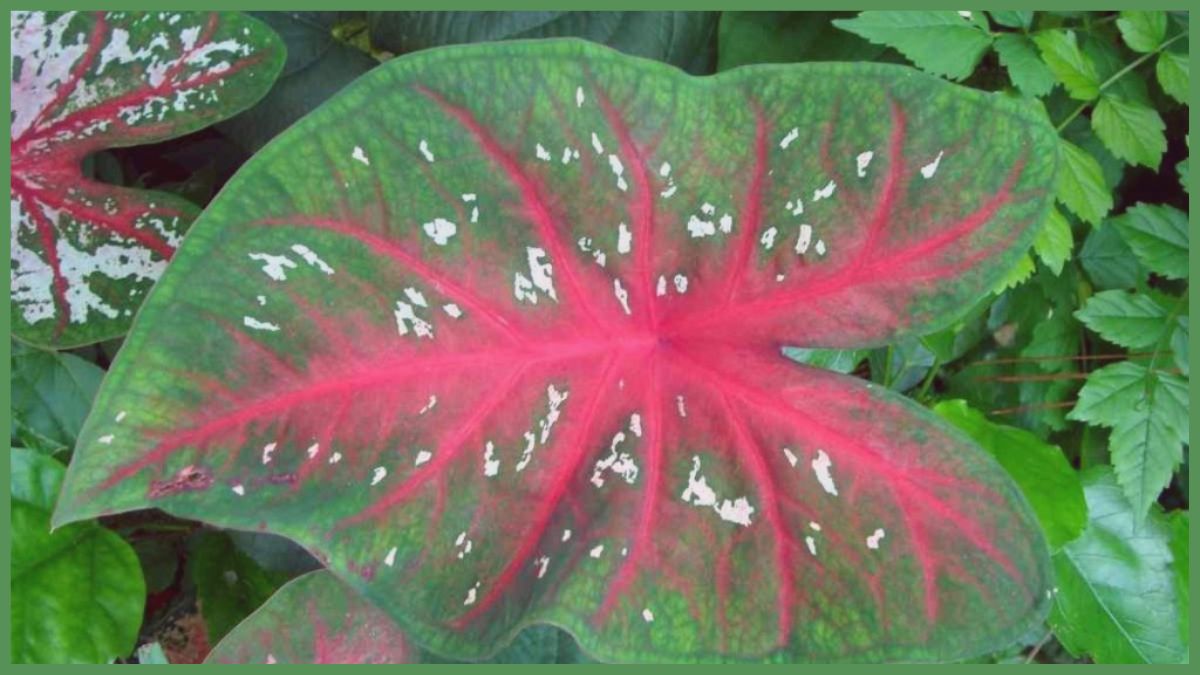If you’re like me, you love your caladiums. They add a touch of elegance to any room and they’re so easy to care for. But why are my caladium leaves curling?
Well, there could be a few reasons. It could be too much sun, not enough water, or even a pest problem. But don’t worry, we’ll figure it out together. So let’s get started troubleshooting why your caladium leaves are curling.
Introduction
Caladiums (Caladium bicolor) are grown for their large, colorful leaves that range in hue from green to red or pink. Grown as annuals or tropical perennials, these plants make excellent houseplants or container plants for patios and decks. Although caladiums are typically healthy plants, sometimes their leaves will start to curl. While curling can be a sign of a problem, it can also be part of the natural growth process.
There are several reasons why caladium leaves might start to curl. If the leaves are new and the plant is young, it is natural for them to curl up a bit as they unfurl. However, if the leaves are older and have been on the plant for awhile, it could be a sign that the plant is not getting enough water or that the temperature is too hot. Curling can also be caused by pests or diseases. Below we will discuss some of the most common reasons for curling leaves and what you can do to fix the problem.
What are the reasons for my caladium leaves to curl?
If the leaves on your caladium are curling, it could be a sign of several different problems. It could be a nutrient deficiency, or it could be due to pests or diseases.
Here are some of the most common reasons for caladium leaves to curl:
Nutrient Deficiency:
If your caladium leaves are lacking in nutrients, they will start to curl and turn yellow. A lack of nitrogen is one of the most common reasons for this problem. You can correct a nitrogen deficiency by fertilizing your plant with a nitrogen-rich fertilizer.
Pests:
Pests like aphids and whiteflies can suck the nutrients out of your caladium leaves, causing them to curl and turn yellow. To get rid of pests, you can use an insecticide or natural controls like ladybugs.
Diseases:
Certain diseases can cause caladium leaves to curl and turn yellow. One of the most common is bacterial leaf spot, which is caused by a bacteria called Pseudomonas cichorii. To prevent this disease, make sure you plant your caladium in well-drained soil and water it at the base of the plant, not on the leaves.
How can I fix the problem?
Caladiums are tropical perennials that are grown for their spectacularly colored leaves. The colors of the leaves range from pale greens to hot pinks, and the shapes of the leaves vary from long and slender to round and squat. No matter what the shape or color of the leaves, they all have one thing in common: when they start to curl, it’s a sign that something is wrong.
There are several possible reasons why your caladium leaves might be curling.
Here are a few of the most common:
Temperature stress: Caladiums are tropical plants that prefer warm, humid conditions. If they’re exposed to temperatures that are too cold or too hot, their leaves will start to curl as a way of protecting themselves from further stress.
Water stress: Like all plants, caladiums need water to stay healthy and thrive. However, too much or too little water can cause problems. If your caladiums are getting too much water, their leaves will start to curl and turn yellow or brown as a way of telling you that they’re overwatered. On the other hand, if they’re not getting enough water, their leaves will also start to curl as a way of conserving moisture.
Nutrient deficiency: Curling leaves can also be a sign that your caladiums are not getting enough of certain nutrients, such as Nitrogen, Potassium , or Phosphorus . If you suspect that this might be the problem, you can try feeding your caladiums with a fertilizer that’s high in these nutrients.
Pests: Occasionally, pests such as aphids , mites , or scale can infest caladium plants and cause the leaves to curl up as a defensive reaction. If you think this might be the problem, check your plants carefully for signs of pests and treat them accordingly if necessary .
Diseases: Curling leaves can also be caused by diseases such as bacterial leaf spot or fungal diseases such as powdery mildew or anthracnose . If you think this might be the problem , check your plants for signs of disease and contact your local Cooperative Extension office for advice on how to treat it .
What should I do to prevent it in the future?
If your caladium’s leaves are curling, it is likely due to a lack of water. This could be because you are not watering the plant enough, or because the pot does not have proper drainage. To prevent this in the future, water your caladium more frequently and make sure that the pot has drainage holes.
Conclusion
Based on the information provided, it is most likely that your caladiums are not getting enough water. Make sure to water them more frequently and/or increase the amount of water you are giving them each time. Additionally, try misting the leaves with water a few times a day to see if that makes a difference. If your caladiums are still not looking better after a week or two, then it is possible that they have a disease or pest problem and you should consult with a professional.
Also Read:


1 thought on “Why Are My Caladium Leaves Curling”